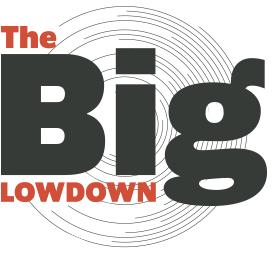The Hero Hub Help content strategy
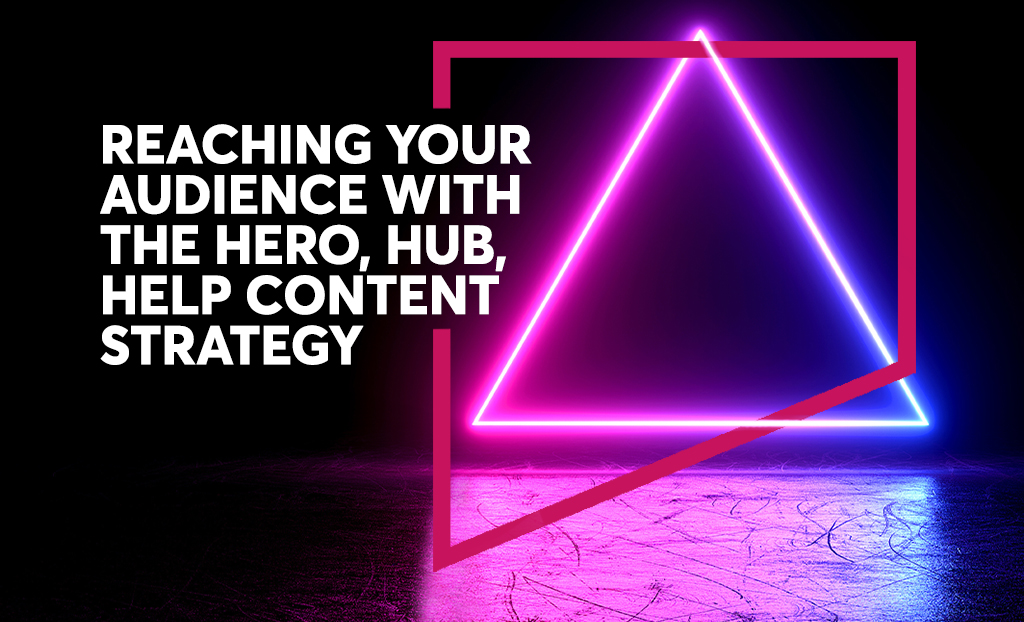
Hero, Hub, Help – a three-step approach to reaching your audience
This won’t be the first piece of marketing content to flash up in front of you today and it won’t be the last. You might already have decided to skim over the subheadings of this article and skip to the last paragraph. It’s okay, start scrolling if you need to.
Billions of pieces of digital content are created every day so it’s no surprise that we can’t digest them all. We’re constantly making decisions in a fraction of a second as to what we give our attention to, and what we don’t.
If you’re already creating brilliant content for your brand, great! But that’s only half the battle. Understanding the benefits of segmenting your content will help you answer the big question: how do you make your content stand out?
A simple strategy that’s proven to work
Ex-Googler, Lazar Dzamic, and media strategist, Justin Kirby, developed a content strategy based on what people searched for and watched on YouTube. Their analysis of user data revealed three types of content that people watch and engage with: Hero, Hub and Help.
The 3H or HHH approach puts content into three clear categories that perform different functions and works across all content strategy, not just video. Brands that deliver the right balance of all three types of content will be successful in pulling audiences through the sales funnel, from cold prospects through to brand advocates and conversions.
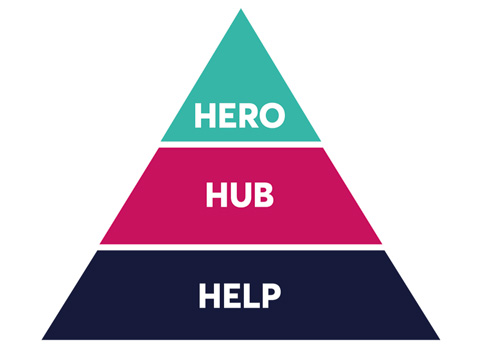
Help
Let’s start at the wide end of the HHH content pyramid with Help content, also known as ‘how-to’ or ‘hygiene’ content. Help content is hugely popular online, with the average person searching over four times every single day, from recipes and children’s homework to product guides and how to wire a plug.
Help content is designed to consistently ‘pull’ new people into your orbit, so frequently offering up helpful content will increase your brand exposure and reach. Keeping it factual, practical and clear will help build trust and foster the beginnings of a valuable customer relationship.
– What? Helpful, how-to information about your product or service
– Who? Targeted audience, great potential for new customers
– How? Step-by-step guides, fact sheets, infographics, e-books, webinars, podcasts
– Where? Social media channels, company website, syndicated websites and sponsored content
– When? Frequency = high (for medium businesses aim for at least once per week)
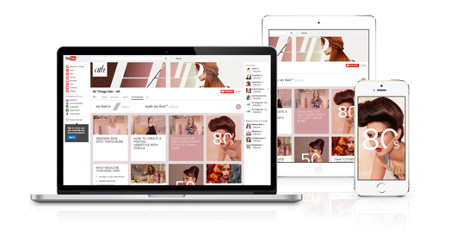
Unilever’s ‘all things hair’ campaign comprised tutorials, videos and articles on everything from how to look after hair to how to put it up, wear it down and anything in between, ultimately helping to drive sales of their haircare products.
Hub
Hub content provides ongoing value to the audience and is ideally a place for those people to congregate and generate conversation. Hub content can be a landing page or website that acts as a home for content that fits a specific purpose or theme, drawing audiences to return to your brand time and time again.
Of course, that involves giving them not just want they need or want right now, but also getting them hooked in and asking audiences to subscribe for more, building up a relationship based on loyalty and mutual benefit.
– What? Value-added content, thought leadership, community-focused
– Who? Nurtures existing customers, draws in new audience
– How? Long-form specialist content in a range of formats (e.g. blog, video)
– Where? Hosted on a trusted space, e.g. brand website or landing page, targeted emails
– When? Frequency = medium
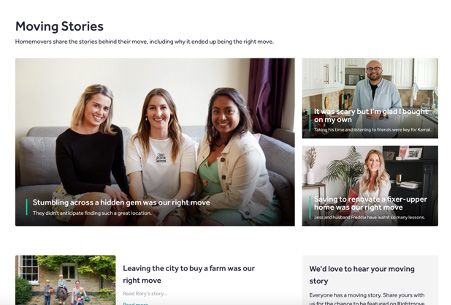
In a sector where the audience may only use the service (i.e. move home) a handful of times in their lifetime, Rightmove nurtures long-term relationships with regular hub content on their website. They entice buyers, sellers, renters and landlords back to see the latest house prices or get inspired by housing trends, keeping the attention away from competitors.
Hero
Hero content is exactly what it suggests: it should inspire your audience and be based on a great idea. This is your ‘wow’ moment and it should be designed to be highly shareable and have a lasting impression on a mass audience.
Audiences tend to find Hero content when they’re browsing and it takes their attention away from what they were doing because the idea draws them in. It’s often their first touchpoint for your brand or campaign, so you need to make an impact.
This can be the most difficult (and expensive) content to create, however, it should have more longevity. Plan carefully and consider how you can tell your story in a memorable way – it might be entertaining, thought-provoking or humorous.
– What? Storytelling content to capture attention and leave a lasting impression
– Who? Mass audience
– How? High-value format, e.g. advert, short film
– Where? Paid-for channels for maximum exposure
– When? Frequency = low

Dove’s Beauty Sketches content grabbed the attention of over 50 million people within 12 days of its release. At over 3 minutes long, considerably longer than a TV advert, the story drew audiences in with its clever narrative.
Where do I start?
Before you start creating your content, make sure you know what your brand’s strategic goals are and identify a core message for each piece of work. The audience should always come away with one main takeaway, such as how to use your product or service, where they can buy it, or what your brand stands for.
We’ve been using the HHH strategy to help hundreds of businesses create and distribute content successfully, driving their brand profiles and winning new business. To find out how we can make your content stand out from the competition, get in touch with us.
